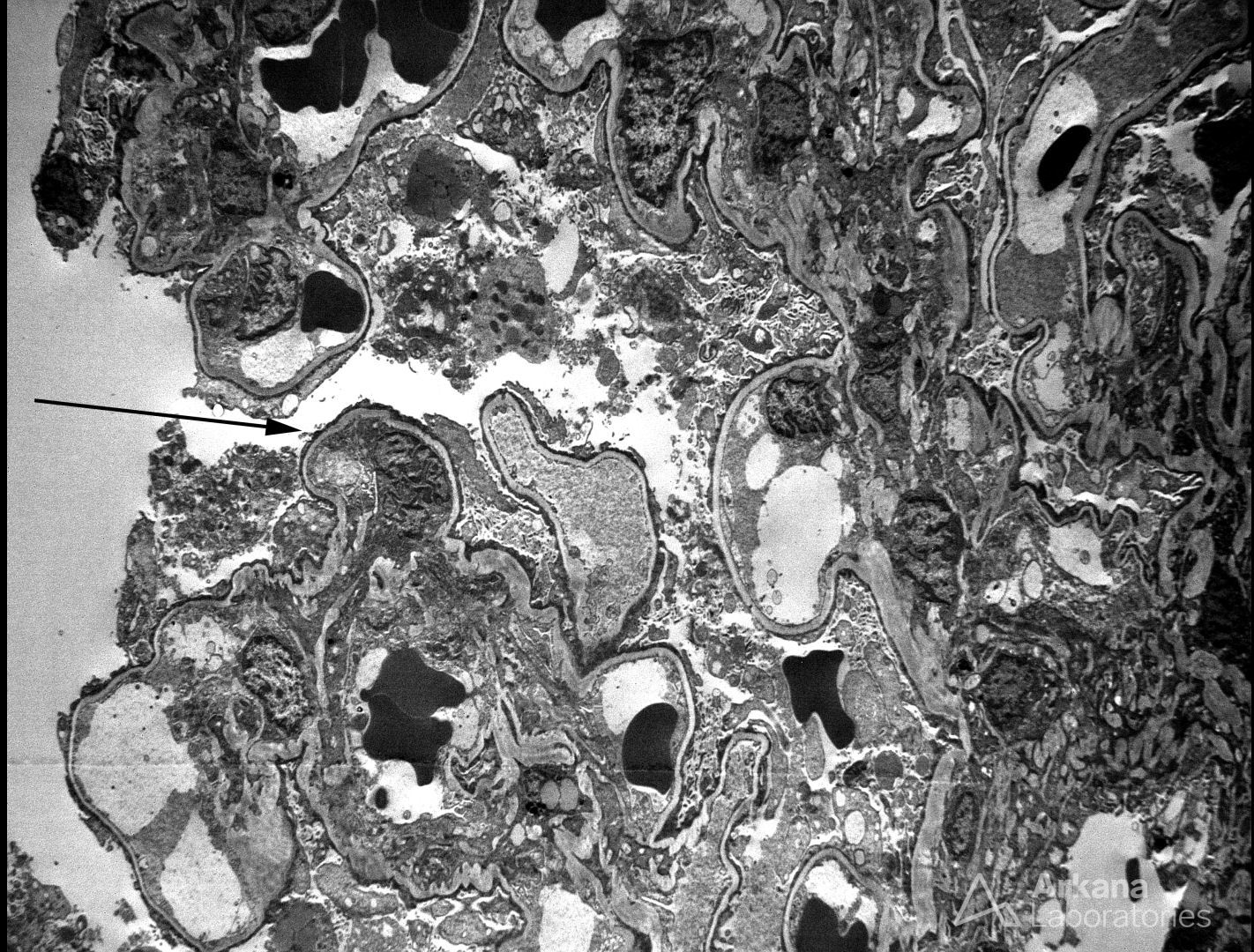Knowing whether a patient has clinical nephrotic syndrome and knowing the degree of podocyte foot process effacement can be helpful diagnostic clues in separating “primary” from “secondary” forms of focal segmental glomerulosclerosis (FSGS). For example, in a patient with the nephrotic syndrome whose biopsy shows FSGS lesions and no significant immune deposits by immunofluorescence, the presence of global effacement of podocyte foot processes by electron microscopy (as seen in Fig 1) provides support for a “primary” FSGS (see reference).
Sethi S et al. Focal and segmental glomerulosclerosis: clinical and kidney biopsy correlations. Clin Kidney J. 2014 Dec;7(6):531-7.PMID: 25503953.
Quick note: This post is to be used for informational purposes only and does not constitute medical or health advice. Each person should consult their own doctor with respect to matters referenced. Arkana Laboratories assumes no liability for actions taken in reliance upon the information contained herein.


